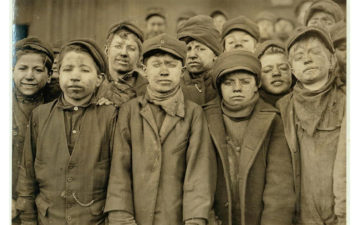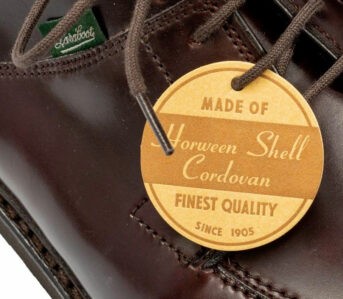Moments in Time takes a closer look at specific pieces and silhouettes from the past that have had a lasting impact on our niche today. From unsung-but-iconic vintage pieces like the Cossack Jacket and Karakoram Parka to modern heritage staples like the Guayabera shirt and Monkey Boot, we’ll be dissecting these classics to find out how they made their mark and where we can find both vintage and contemporary articles today
The time of the paperboy is over. Once upon a time, practically every suburban neighborhood in the USA had a young person delivering newspapers by bicycle in the early morning. They are often portrayed in a cliche fashion in American movies, particularly those based in mid-century America through to the 90s. A young lad cycles nonchalantly down a wide suburban street, reaches into the basket of his bike — or back into his newspaper bag — and slings a paper with pinpoint accuracy onto someone’s drive. The camera zooms to the front page to reveal a headline that kicks off the movie’s narrative, and the kid cycles on to throw dozens more porch-seeking papers to complete their round.
While paperboys don’t really exist in this format today for reasons we’ll touch on later, the heritage clothing scene has maintained an appreciation for the bags used by paperboys throughout the early-to-mid 20th century. In this edition of Moments in Time, we will be taking a look at the newspaper bag in its most iconic form, its utility, and where you can find both vintage examples and fantastic reproductions today.
The Golden Age of the Paperboy
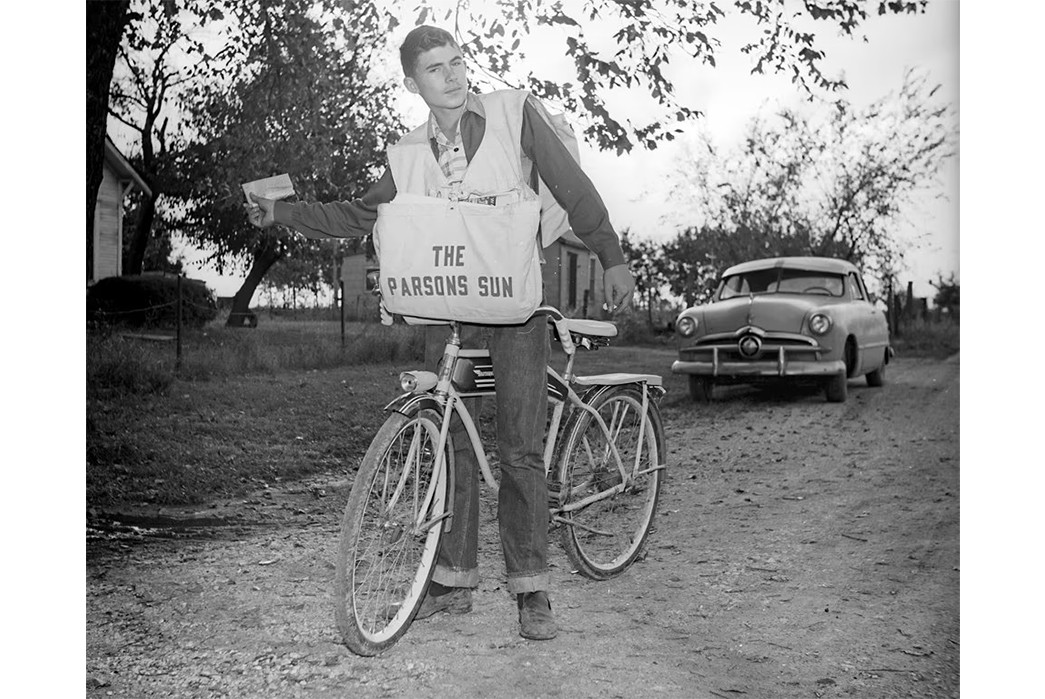
A lesser-seen overhead, apron-style newspaper bag, via Esty.
During the golden age of the American newspaper, paper distributors highlighted a need for a daily delivery service. Newspaper legend has it that on September 10, 1833, The New York Sun, hired a 10-year-old Irish boy, Barney Flaherty, to sell his 1 cent ‘penny press’ papers. Newspaper lore suggests that the only requirement of Flaherty was that he could ‘throw a newspaper into the bushes’.
While the whole truth of this story is not known, it is true that the mid-1800s saw the rise of the paperboy, an occupation that would become a part of everyday American life by the late 1800s. Newspaper distributors hired young boys — typically older, pre-teen children or teenagers — to deliver newspapers to paying residents within a certain radius. The role of the paperboy varied from employer to employer, but the nuts and bolts of the job was delivering papers by bicycle to paying customers, sometimes collecting payments for the distributor.
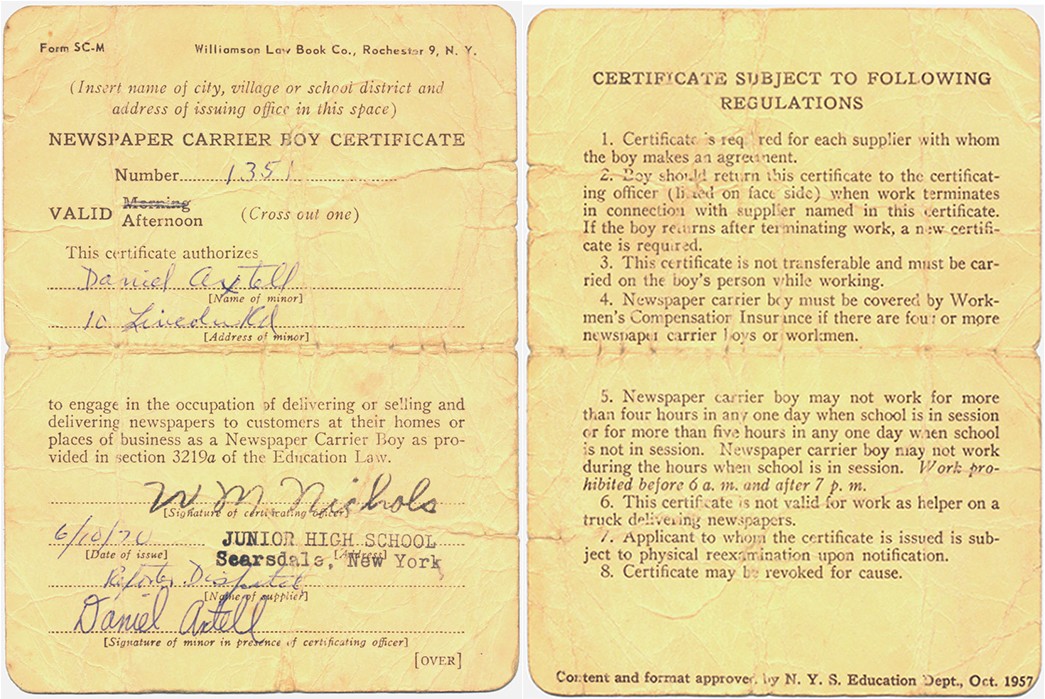
Paperboy license for boys under age 14 in 1970 when girls were not allowed to deliver newspapers in New York State, via Wikipedia.
Newspaper Bags
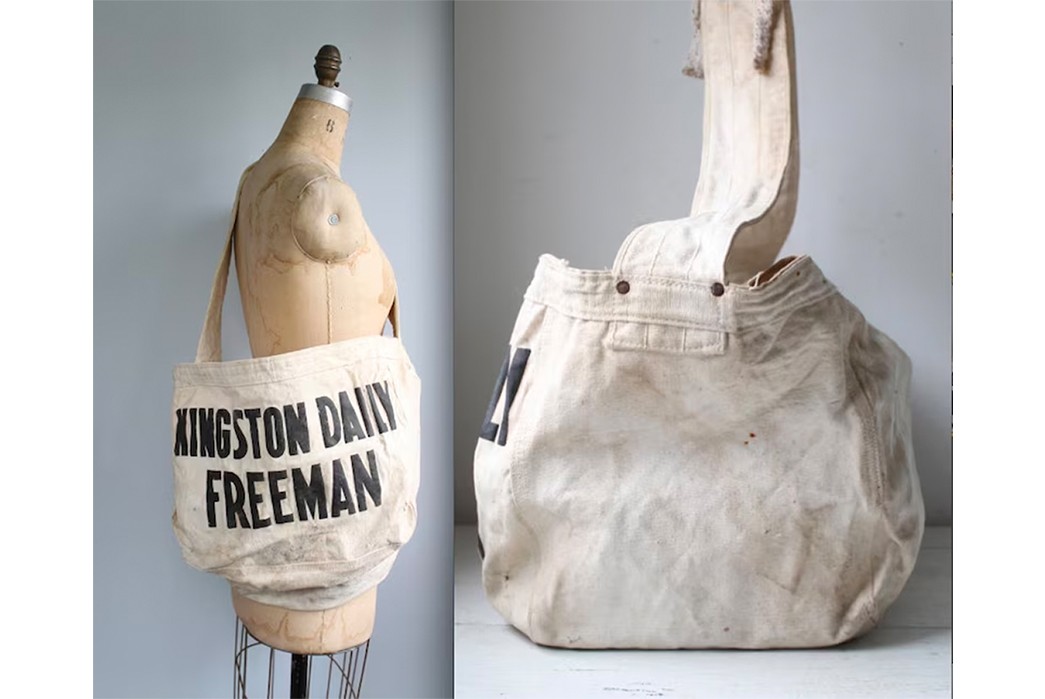
A Kingston Daily Freeman newspaper bag via Etsy.
To aid in their delivery missions, paperboys were provided with a newspaper bag. These bags varied in design — some were built into a wooden frame that would fit onto the boy’s bicycle, some were more like sacks that sat in the bicycle’s basket, and some slung crossbody in the style of a messenger bag. Whilst the latter is the most iconic silhouette, the famous hallmark of these robust cotton bags was their markings. Each bag was marked with the name of the newspaper the boy was delivering, by way of large printed letters or sewn-on patches, making the young boy a mobile advertisement for the newspaper, as well as its courier.
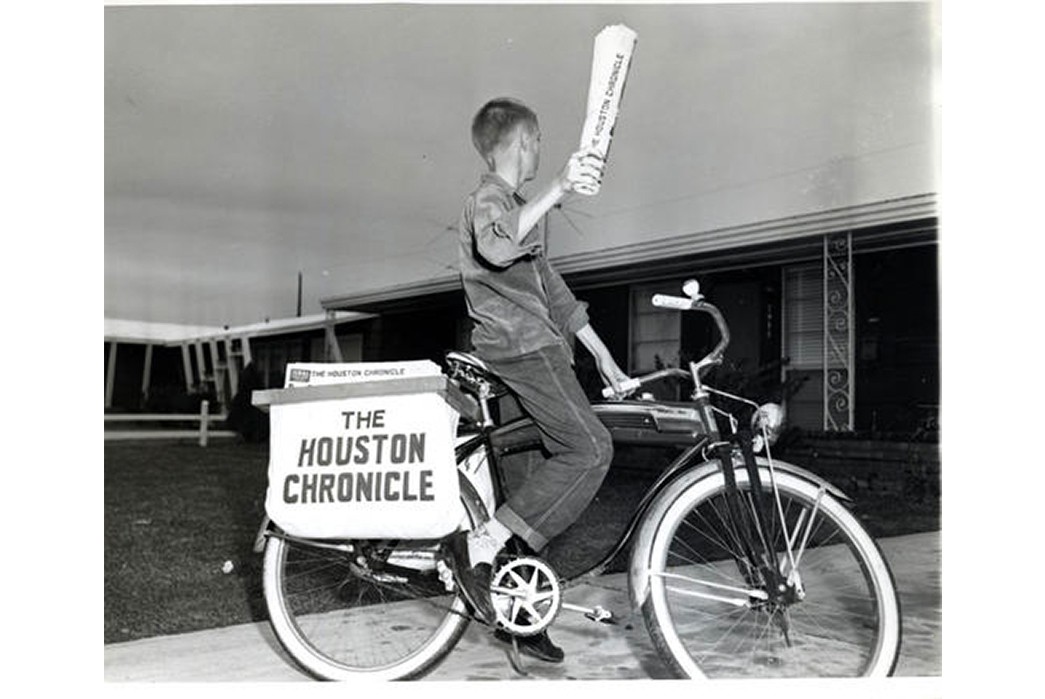
A wooden frame-mounted newspaper bag, via The Rational Walk.
The main feature of these bags is that they were large, hard-wearing, and spacious, allowing the paperboy to carry as many rolled-up papers as possible. Another key characteristic is the wide, double-backed strap. This larger strap kept the bag secure and reduced chafing for paperboys, sparing their shoulders from irritation and pain. Rivet reinforcements were common so that the bags could be used for a long time and passed onto other paperboys.
This classic formula remained present until the dying days of the paperboy but became less common due to the advancement of water-resistant fabrics.
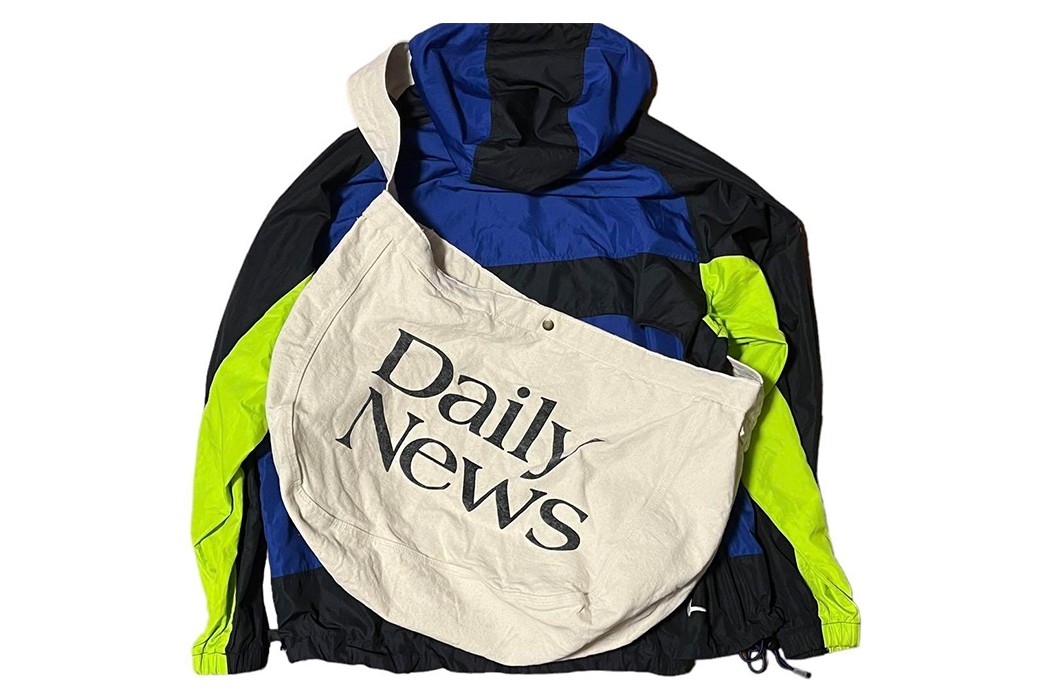
A circa-1990s newspaper bag, via apidofarm.
Decline of Paperboys
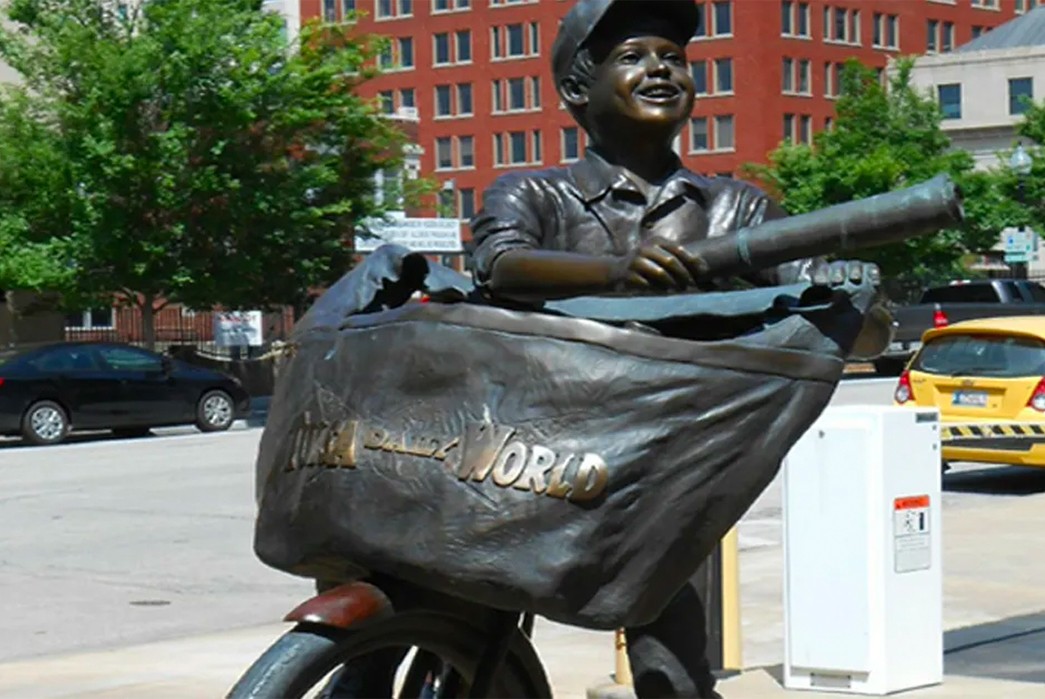
Image via American Home Health.
One would think that the Keating-Owen Child Labor Act of 1916 would have started the decline in the number of paperboys in the States, but one would be wrong. For decades, it remained incredibly easy for distributors to work around the shifting perspectives and legislation on child labor by simply declaring children as independent contractors and not employees. Sadly, it wasn’t ethical concerns of child labor that saw the number of paperboys decline, it was our old friend, capitalism.
The early 90s saw newspapers begin shutting down their afternoon editions – a paper format widely delivered by paperboys due to school schedules. Not only that, but the rise of the internet meant that more people began accessing news digitally, which led to declines in sales which required newspaper companies to join forces and ultimately shrink their outputs to stay afloat. Newspapers had survived the boom of radio and then television, but the internet would prove to be a formidable enemy.
With print editions becoming scarcer, fewer people were required to deliver them. This, in coalition with ever-tightening child labor laws, meant that it was more economical (and ethical) for a distributor to pay an adult with an automobile to deliver newspapers than multiple children on bicycles. Cars and vans have more load space and, therefore can carry more papers, and be employed without any child labor concerns.
With all of the above considered, the role of the paperboy is essentially defunct. If you get newspapers delivered in 2023, they will be delivered by an adult in an automobile, and not a child. Whether that is a good thing or not is for you to decide, but there is no denying that paperboys have left a lasting impact on society.
Buying a Newspaper Bag Today
Vintage
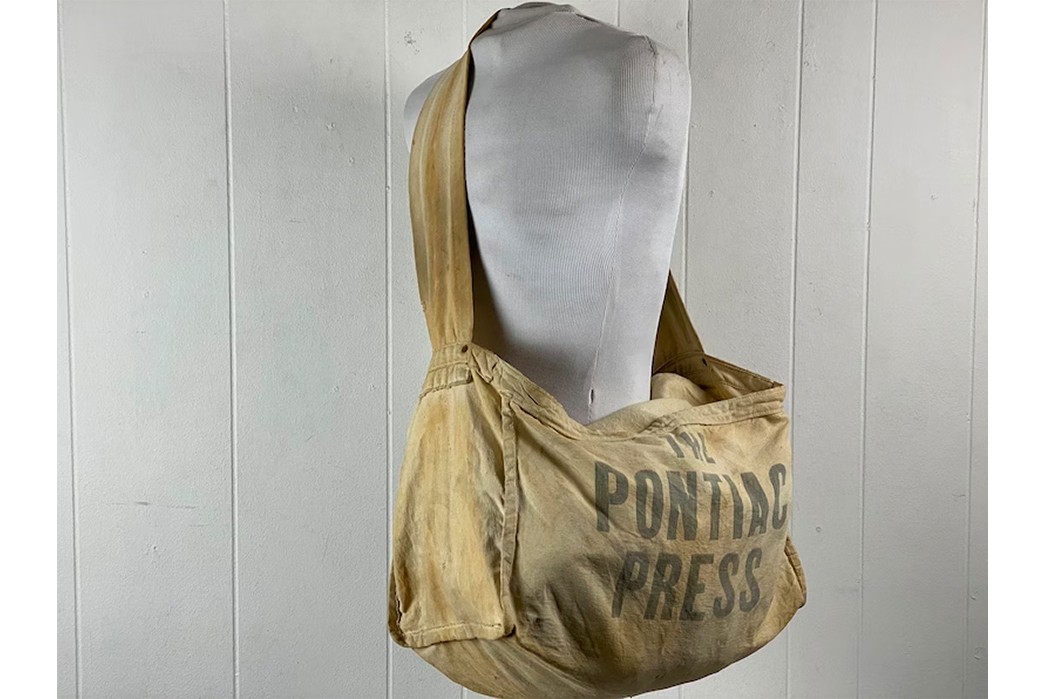
Pontiac Press newspaper bag via Etsy.
Due to the sheer amount of paperboys over the 20th century, you can actually pick up a nice vintage newspaper bag for a fair price. The above vintage Pontiac Press newspaper bag sold for under $200 on Etsy, and other vintage articles regularly pop up on eBay and Etsy for around the same price.
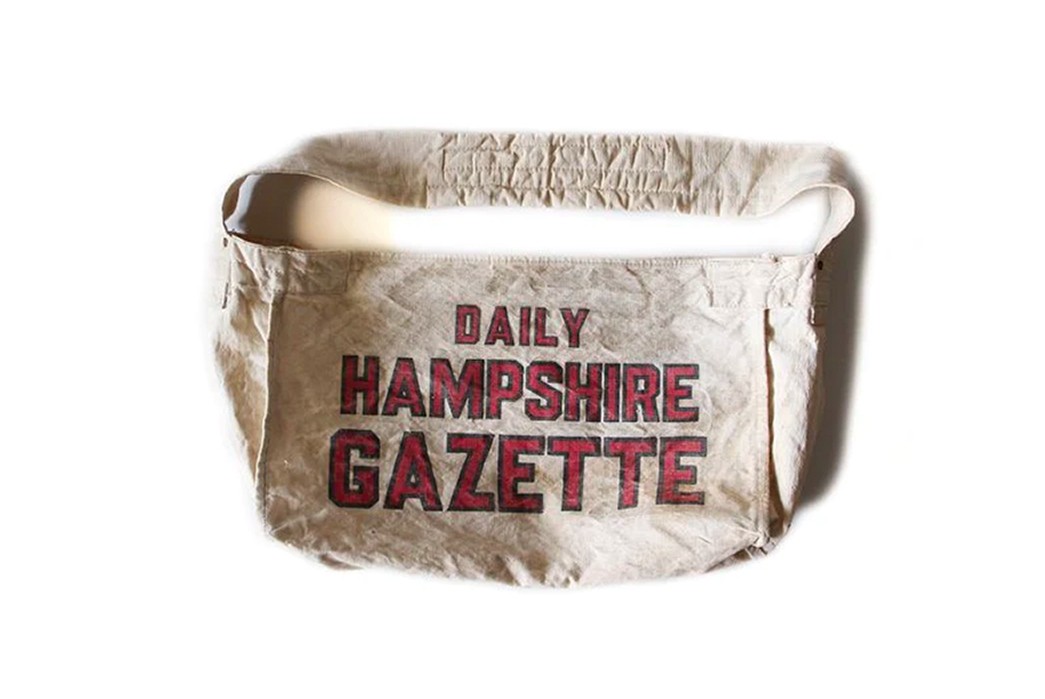
Vintage Hampshire Gazette newspaper bag via Japanese vintage boutique, Burma Shave.
Worthwhile Reproductions
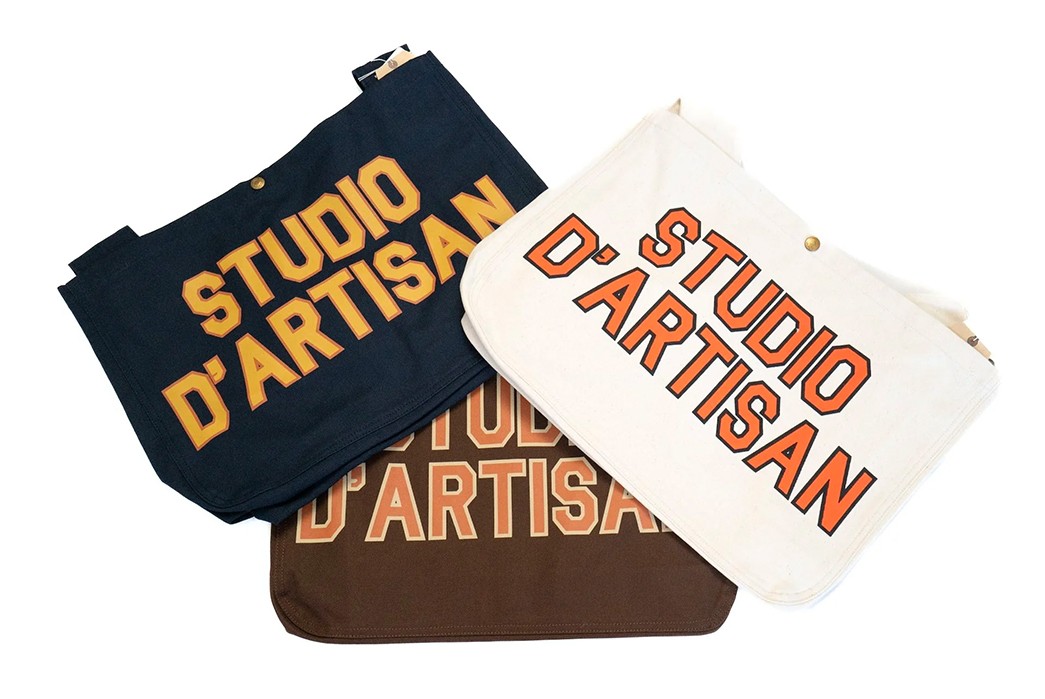
Studio D’Artisan Newspaper Bag, available for $103 from Corlection.
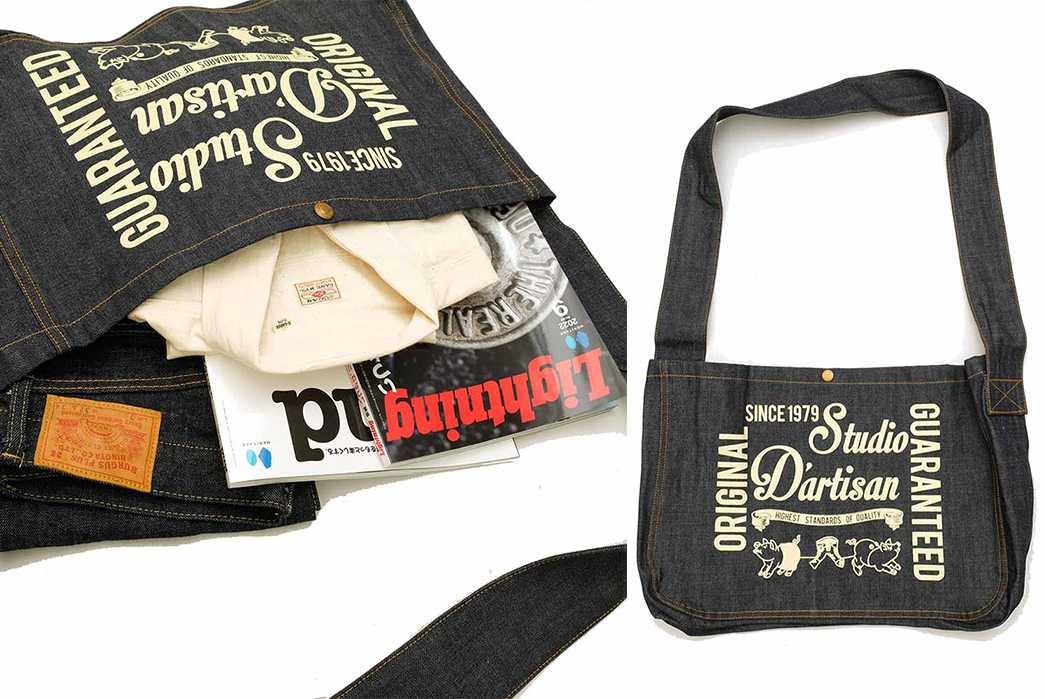
Studio D’Artisan Denim Newspaper Bag, available for $96 from Corlection.
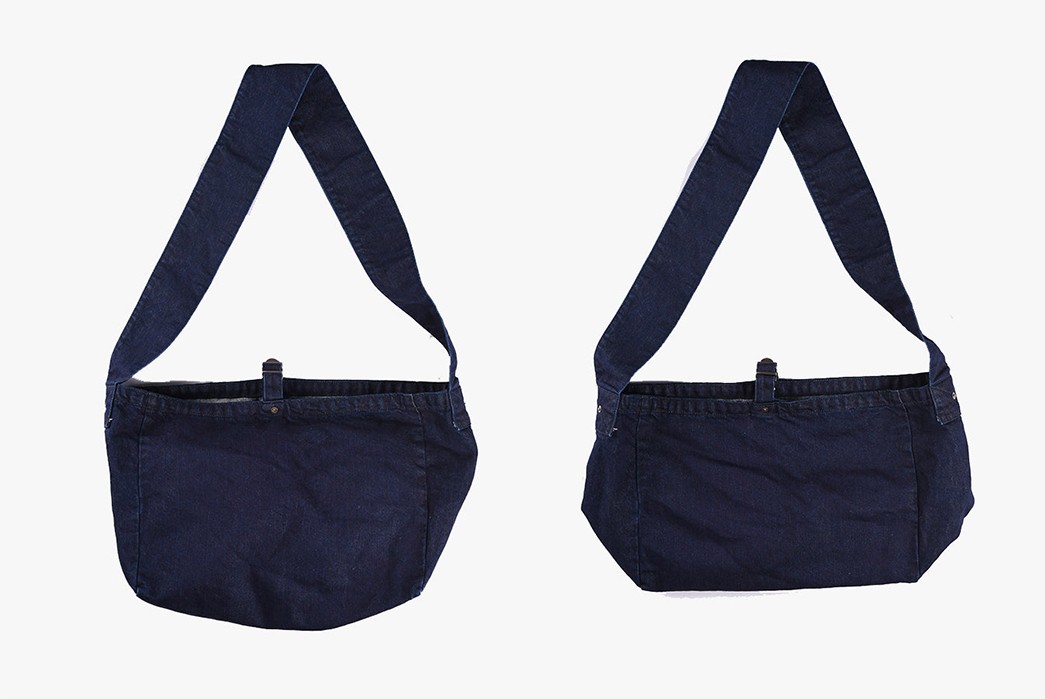
Japan Blue Washi Denim Newspaper Bag, available for $48 from Jeanstore.
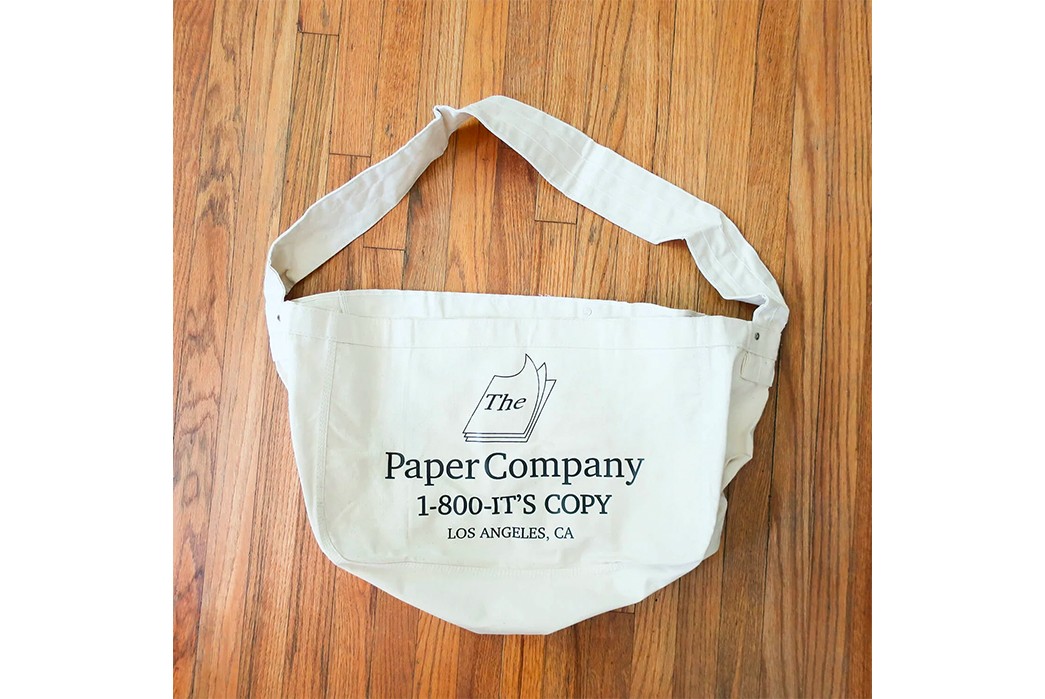
Paper Company Newspaper Bag, available for $80 from High Tide Store DTLA.


